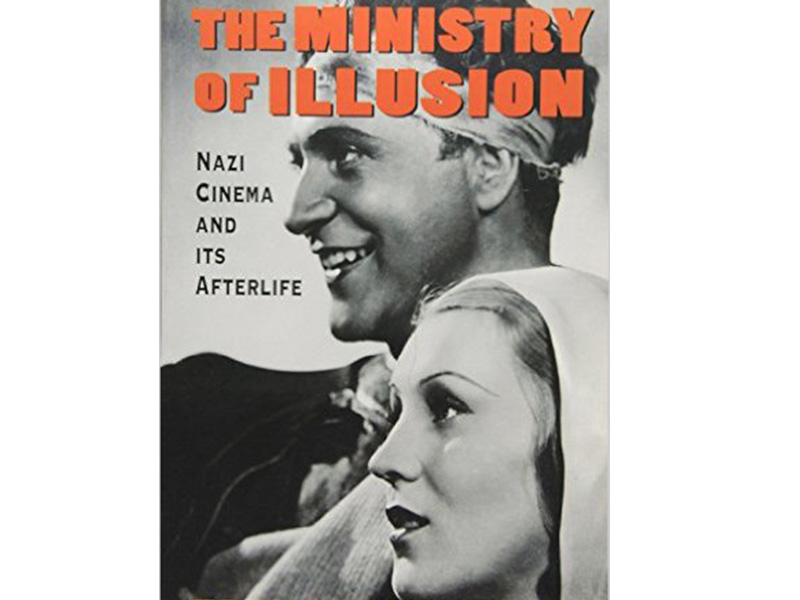The 80th anniversary of the release of the German film The Triumph of the Will calls for revisiting its significance. Leni Riefenstahl’s documentary is constantly reconfigured and recycled for scenes requiring mass ornamentation in modern cinema, and its thematic ethos resonates in the folklore of 21st-century social media. To this day, the film’s camouflaged message of pied pipers leading the multitudes to the promised land of imagined communities has been adapted by the disseminators of genocidal propaganda.
As German Prof. Eric Rentschler observed in his book on Nazi cinema, The Ministry of Illusion, the conjurers of Berlin made full use of film’s ability to mobilize emotions and immobilize minds. “Audiovisual machinery played a crucial role in National Socialist design for living, in radical attempts to control human activity and dominate the physical world,” Rentschler wrote.
Indeed, the Third Reich was, in the words of filmmaker Hans Jurgen Syberberg, “a sustained cinematic event,” where its principal protagonists experienced their participation in shaping and leading Germany to total destruction as performing “stars” in the “greatest movie” ever made. They were simply “movie mad.”
The Nuremberg Rally’s choreography of violence and its “brute symmetry,” in the words of American writer and filmmaker Susan Sontag, amounted to Nazi self-perception being projected onto the silver screen. The rally was a meticulously staged show, adorned with human and material props, exclusively designed for Riefenstahl’s lenses.
In the film, Adolf Hitler was a national matinee idol who also happened to be the Reich’s chancellor. The Fuhrer became the artist, and the artist became the Fuhrer. Indeed, according to a conversation in August 1939 before the outbreak of World War II, published in The British War Blue Book, Hitler told British ambassador Neville Henderson: “I am an artist and not a politician. Once the Polish question is settled, I want to end my life as an artist.”
By estheticizing the political sphere, the Nazis anesthetized the masses with “songs, props, circuses and dances.” These were the tools of the lethal seduction that enabled the National Socialists to create an omnipotent and omnipresent media dictatorship. The “celebrities” of the New Germany became also the jailers of the German mind.
The notion of “captive audience” assumed a new and sinister meaning in the Nazi world of manufactured dreams. But what we failed to see, as American historian George Mosse said, was “that the fascist esthetic itself reflected the needs and hopes of contemporary society, that what we brushed aside as the so-called superstructure was in reality the means through which most people grasped the fascist message, transforming politics into a civic religion.”
And this is precisely how the celluloid “superstructure” engendered the invisible pied piper leading Germany and Europe with songs and dances to a calamitous finale.
The wizardry of fascism fascinated then, and continues to fascinate now. If the esthetic constructs of Leni Riefenstahl are enjoying a posthumous revival in modern cinema – as digital special effects greatly enhance the visual power of epic mass ornamentation – it is not because a venomous ideology has been resuscitated. It is because the form enjoys enduring appeal.
The danger here is that digital special effects combined with poisonous content can become once more a lethal tool in deadly hands. Rentschler was the first to point out that American filmmaker George Lucas restaged ceremonies from The Triumph of the Will in the final scene of Star Wars, Episode 1. In Batman Returns, the monumental constructs were pure Riefenstahl, Speer and Breker. More recently, The Hunger Games episodes, Ridley Scott’s Exodus: Gods and Kings, and Peter Jackson’s Lord of the Rings and Hobbit trilogies have encapsulated the quintessence of The Triumph’s form.
But the real contemporary problem with the appeal of Leni Riefenstahl’s vision does not reside in digitally reconfigured battle scenes. It finds its most lethal expression in cyberspace and its plethora of ubiquitous platforms that have become the dominant media for the dissemination of hatred. The Net defines who we are, how we perceive ourselves, how we project our desires, how we love, how we hate and how we preach violence. It is pervasive and all consuming in terms of its ability to manipulate emotions, mobilize fears, generate instant mass action communities and even light the fuse of orgies of ethnic mass murder on a global scale.
